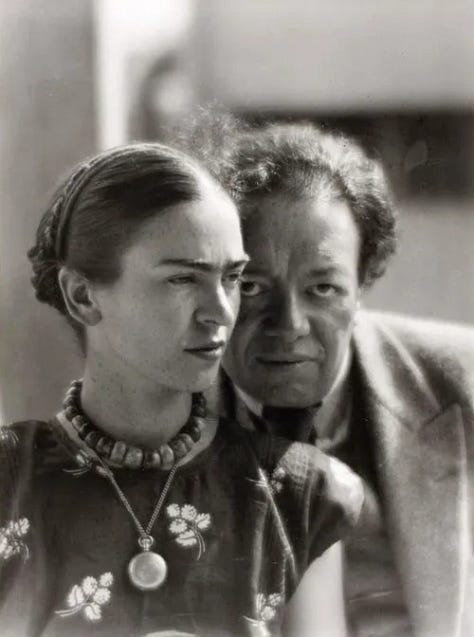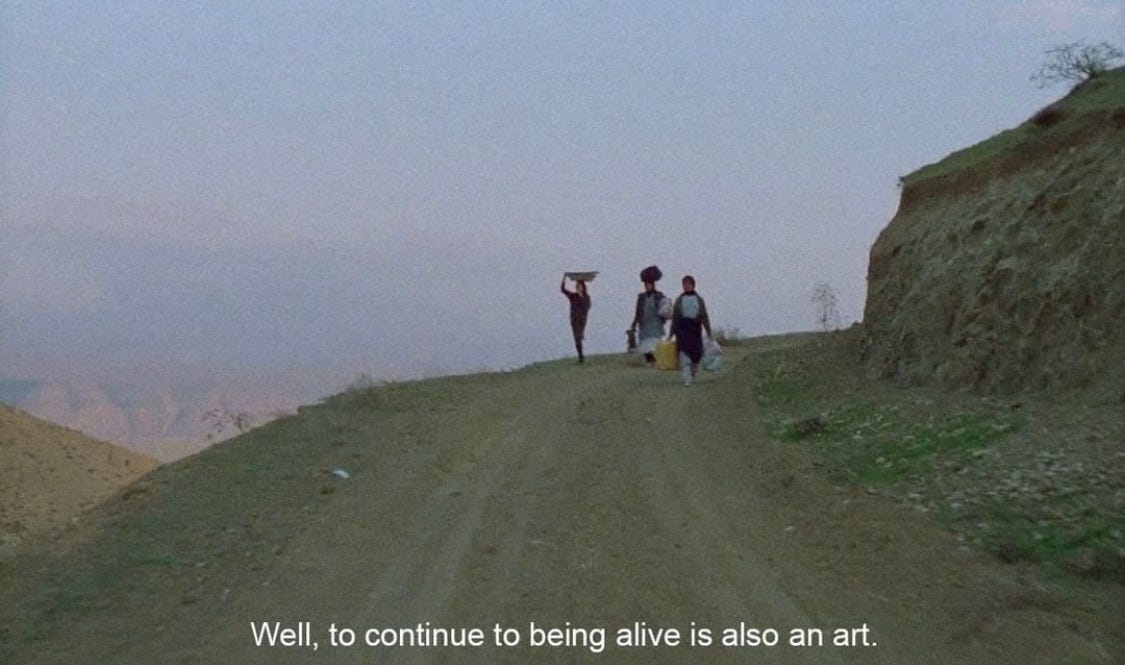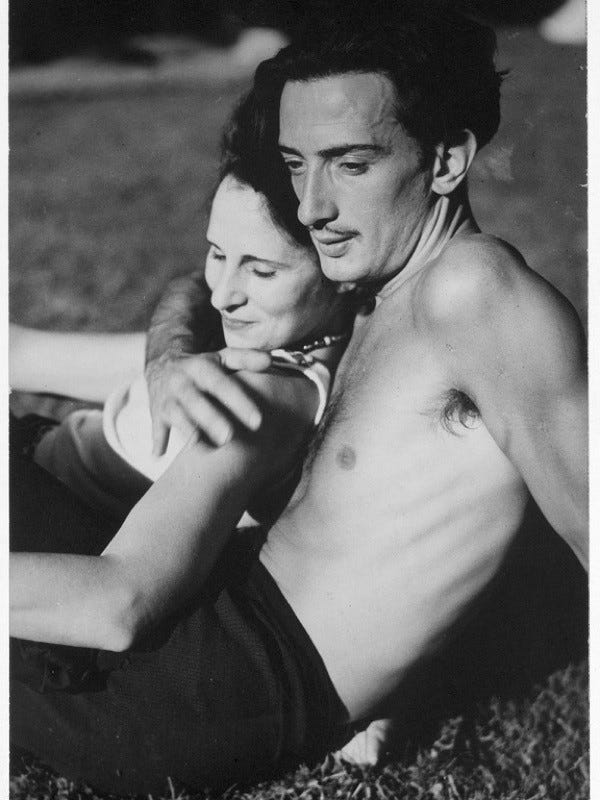being your own muse
Is the artist the one who captures the light, or is the artist the one who shines the light?
I have somewhat hesitantly and other times robustly declared myself to be entering an Artist Era. This is not some elitist expression, but most simply it is a reclamation of my girlhood. The first thing I ever wanted to be, when my brain could conceive of such a question when asked, was an Artist. And from that moment onward, I can remember my parents, teachers and culture at large telling me that making art was a nice hobby, but not a real job. This coupled with a sometimes crippling perfectionism led me away from pursuing art as deeply as my younger self desired. I was still enamored with the idea, this archetype of the artist, but kept it arms length away. In classic Freudian fashion, as I got older this repressed part of myself is what I was attracted to most fervently in others. From lovers to friends, I adored artists and felt at home in their chaos. I deeply understood the sometimes all consuming desire that to the uninitiated could be taken as selfish, but I had experienced enough myself to know was inspiration.
I often took on the role of Muse. If I wasn’t going to create art, I could then inspire art. I knew the energy of Eros intimately and it needed to be channeled somewhere. I needed to be adjacent to spaces where art was valued, yet even in these spaces the chasm between myself and my inhibitions did not let me pick up a paint brush or pluck a guitar.
Looking back, I recognize that the Muse actually is a part of the art. The Muse is essential, in fact. Muse comes to us in many forms. Sometimes muse is the bridge of a song, or a herons wing, or a cup of coffee. There is also the living muse, the individual who aims to live their life as if it is Art: as if there is no separation from the mundane and the magic. For the muse, every small act of your life is sacred and you yourself are a walking embodiment of art. (Aren’t we?) That energy flows out from you in reverberations that others can feel and taste like salt on wind.
As a film obsessed teenager I often was both director and muse, gazing at my life as if I was telling a story, and this inspired me to live a life that was worth telling about. It inspired me to go through life as if these moments were poignant enough to capture, beautiful enough to matter. It also taught me the power of narrative and how inevitably we embody the stories we tell ourselves. Plots can be rewritten.
Within each of us as individuals I believe lives both the muse and the artist, the witness and the witnessed. What does it look like to hold both?
There is something very comfortable about being the Muse. I enjoyed the singular attention given to me when an artist, sometimes a lover, other times platonic, became infatuated and inspired. To be a Muse you are simply being. The pressure of translating is off the table, as is connecting with an audience. You are not concerned with capturing the light just right, you become the light itself, and that is a very different type of magic.
Is the artist the one who captures the light, or is the artist the one who shines the light? I think about all the femmes throughout history who have inspired men in their respective creative works, many of them artists themselves. I wonder how much of what we applaud is merely a translation of the art that was their lives.
Dalí seemed to understand the blurred lines of muse and artist that his wife Gala embodied: “It was she who chose the image with which she wanted to present and, especially, represent herself. It is possible to design one’s own self-portrait without producing a tangible pictorial work.”
Salvador even signed some works with their joint signature, “Gala Salvador Dalí,” in honor of his belief that it was “mostly with your blood, Gala, that I paint my pictures.”
Gala was without a doubt the muse of Dalí’s work. He painted countless portraits of her. When she had a hysterectomy, he painted The Bleeding Roses, which shows Gala’s mane of blonde hair and her figure with a bundle of crimson roses across her stomach, the petals of which turn into drops of blood. He captured and fed off of her volatile emotions and translated them to canvas, and was aware enough of this exchange to credit her as an artist alongside him.

In the literary world, artistic power couples like Virginia and Leonard Woolf, Georgie “George” and W.B. Yeats, and the ever infamous Fitzgeralds come to mind. While Leonard Woolf’s wife Virginia eventually eclipsed his own fame and recognition as a writer (which he accepted happily), Zelda Fitzgerald frequently had her diaries plagiarized to be included in her husbands fiction. Zelda was as much a co-author as she was a muse despite her husbands attempts to suffocate this knowledge and claim her work as his own.
And there is perhaps no greater artistic love affair than Frida Kahlo and Diego Rivera. Frida’s art embodies something specific that I find myself chasing and stalking like a wolf. She was sovereignly her own muse as well as the one holding the brush. It is her own gaze which pierces back at us from the canvas, the face she replicated again and again. She claims herself boldly, turning her gaze inward and then outward in raw declaration.
“I am my own muse, the subject I know best.”
Frida Kahlo
She was also fascinated, inspired and influenced by her husband Diego. They creatively supported and energized each others work. While their dynamic was sometimes tumultuous there was always mutual respect and an undercurrent of passion. This dance of mutual inspiration while maintaining individual expression is one I find myself hungering for, this fluid axis where to perch and balance there feels like finding perfect pitch. This is what it must feel like to meet your equal.



Currently, I am filling my house with large canvases. I am scrying into the colors of oxblood and ochre and indigo. I am dancing with as many mediums as I can get my hands on. The mirror becomes a tool more than a reflection. My daily to-do list includes killing my inner perfectionist and playing with childlike abandonment. I will leave this post with the words of Anaïs Nin, for I too have come to realize, it’s time to do the job myself.
For too many centuries women have been being muses to artists. I wanted to be the muse, I wanted to be the wife of the artist, but I was really trying to avoid the final issue — that I had to do the job myself.
― Anaïs Nin





Oh, thank you for posting this. I really love your art and I am glad to have stumbled upon it today. Good luck and I hope you're well. <3